Full Text Searchable PDF User Manual
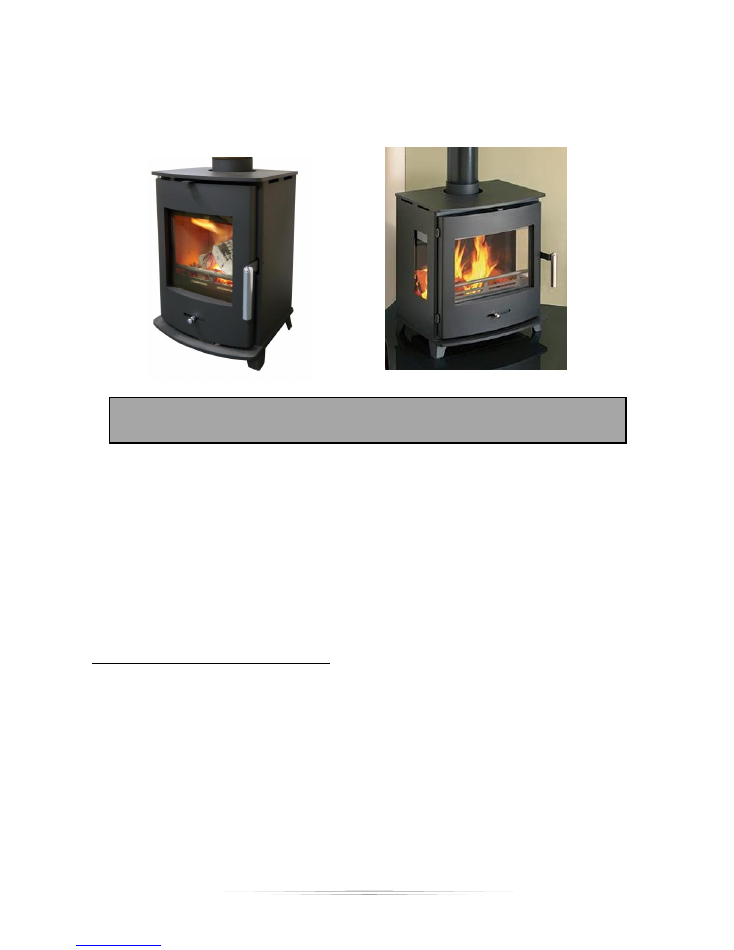
1
Installation and Operating Instructions for Newbourne 35/40/50/60FS Multi Fuel Stoves
Ref: Pevex1022/AH/ver1:May2015
NEWBOURNE 35/40/50/60FS & PANORAMA RANGE
WOOD AND MULTI FUEL FREE STANDING STOVES
CE and EN13240 Approved
APPROVED FOR USE IN SMOKE CONTROL AREAS WHEN
BURNING DRY WOOD LOGS OR AUTHORISED FUELS
Manufactured and Distributed by Pevex Enterprises Ltd
Unit MP7 Kirrawah Business Park, Waldringfield, Ipswich, IP12 4PR.
Tel: 01473 736399
Fax: 01473 736406
Congratulations on the purchase of your new Newbourne stove. Your new purchase will provide you with a
level of pleasure and comfort not previously experienced in your home.
The Newbourne is a heavy duty British designed multifuel stove. It has been designed for easy installation and
ease of use giving a lovely flame pattern when burning wood and a wonderful warm radiant and convection
heat. The stoves are highly efficient with a clean burn firebox and efficiencies above 80% (Net) when burning
wood and features a curved door, large glass window, vermiculite insulated firebox, convector top plate, bolt
on adjustable feet, ergonomic handle and heavy weight steel construction.
Please read and follow the advice and instructions on the safe and efficient operation of your stove to
ensure it has a long trouble free life and also read and follow the installation instructions before
installing the stove.
PART 1 OPERATING INSTRUCTIONS
A stove compared with an open fire is a very efficient heating appliance and must be installed and used safely
and wisely, it is important to understand the working of such an appliance and to understand the process of
converting the fuel into heat and its efficient transfer from the firebox to the room in order to gain the most from
the stove.
A stove creates an almost perfect environment to burn wood in. The firebox will run at a very high temperature
ideal to burn the volatiles given off in the burning process and the precise air controls allow minimal heat loss
into the flue. Newbourne stoveS operates at an efficiency of 73 %
and 76% on a Gross CV basis (78-83%
Net) and is very much more efficient than an open fire avoiding the wasteful draughts normally associated with
that type of appliance
Burning wood is the natural way to store the sun’s energy to then be released in a carbon neutral process to
heat your house when the need is most. On a cold winters night there is nothing to beat the release of heat
and flame in a stove to raise the spirit.
The preparation and burning of wood as a fuel in stoves can be traced back many centuries, however it is a
forgotten or maybe never fully discovered activity in the United Kingdom, we have much to learn from our

2
Installation and Operating Instructions for Newbourne 35/40/50/60FS Multi Fuel Stoves
Ref: Pevex1022/AH/ver1:May2015
European and Scandinavian neighbours whose colder winters have instinctively led them into a natural wood
burning culture.
Wood for fuel is probably one of the most environmentally friendly energy sources, it is carbon neutral, trees
used for fuel production regenerate very quickly and it is a pleasant and satisfying job preparing the firewood
for the coming winters.
WARNING NOTE
Properly installed, operated and maintained this stove will not emit fumes into the dwelling. Occasional fumes
from de-ashing and refueling may occur. However, persistent fume emission is potentially dangerous and
must not be tolerated. If fume emission persists, then the following immediate action should be taken:
a) Open doors and windows to ventilate room and then leave the premises.
b) Let the fire go out.
c) Check for flue or chimney blockage and clean if required
d) Do not attempt to relight the fire until the cause of the fume emission has been identified and
corrected. If necessary seek expert advice
The most common cause of fume emission is flue way or chimney blockage. For your own safety these must
be kept clean at all times.
Any permanent air vent provided for combustion air must not be blocked off
.
There must not be an extractor fan fitted in the same room as the stove as this can cause the stove to
emit dangerous fumes into the room.
Your installer should have fitted a CO alarm in the same room as the appliance. If the alarm sounds
unexpectedly then follow procedures a-d as shown above.
CHIMNEY CLEANING
The chimney should be swept at least once a year for smokeless fuels and a minimum of twice a year for wood
and other fuels. It is important that the flue connection and chimney are swept prior to lighting up after a
prolonged shutdown period. If the stove is fitted in place of an open fire then the chimney should be swept one
month after installation to clear any soot falls which may have occurred due to the difference in combustion
between the stove and the open fire.
In situations where it is not possible to sweep through the stove the installer will have provided alternative
means such as a soot door. After sweeping the chimney, the stove flue outlet and the flue pipe connecting the
stove to the chimney must be cleaned with a flue brush.
It is possible to sweep through the Newbourne 35FS stove by removing the lower vermiculite baffle and upper
steel baffle to gain access to the flue pipe. The method of removal is described later in the manual on page 8.
The connecting flue pipe and stove baffle should be checked monthly to clear any fly ash or soot
deposits.
USE OF A FIREGUARD
When using the stove in situations where children, aged and/or infirm persons are present a fireguard must be
used to prevent accidental contact with the stove. The fireguard should be manufactured in accordance with
BS6539.
INSTRUCTIONS FOR USE:
First Firing
The stove has been treated with a heat-resistant coating, which hardens at a temperature of approximately
250
0
C. This hardening process causes the production of smoke and malodorous fumes, so the room must be
very well ventilated
.
During the first firing,
which should be carried out using approximately 1 kg of wood, the door must be left
slightly open and must not be closed until the stove is cold. This is to prevent the sealing rope sticking to the
stove.
RECOMMENDED FUELS
The recommended fuels that can be burnt on these stoves is wood logs and smokeless fuels of which we would
recommend ancit which is approved by Hetas.
Correct firing provides optimal heat output and maximum economy. At the same time, correct firing prevents
environmental damage in the form of smoke and malodorous fumes and also reduces the risk of chimney fires.
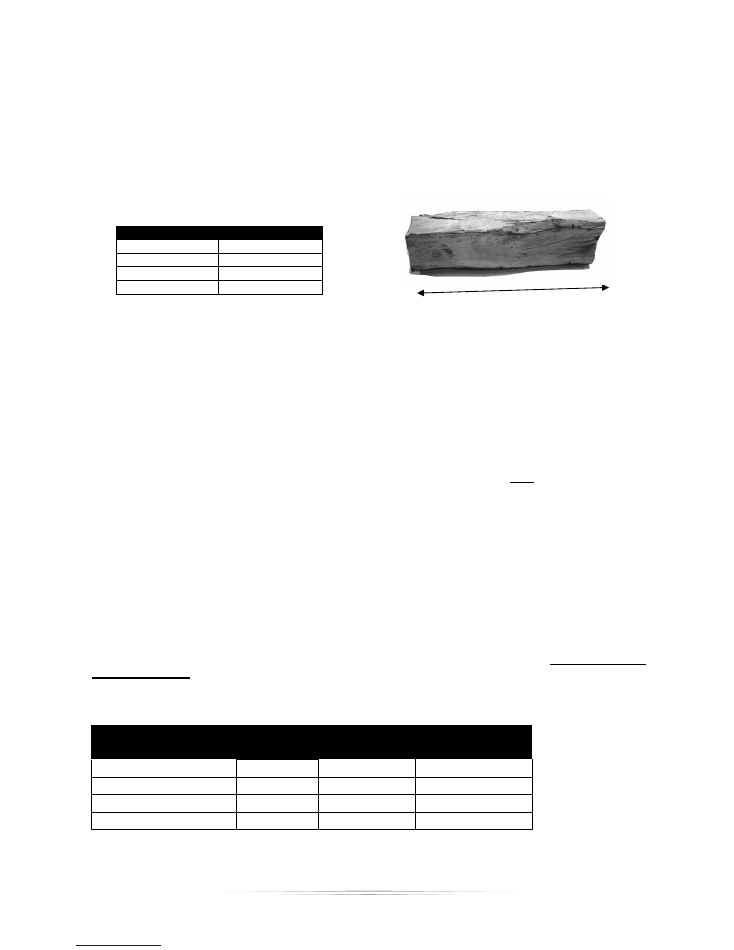
3
Installation and Operating Instructions for Newbourne 35/40/50/60FS Multi Fuel Stoves
Ref: Pevex1022/AH/ver1:May2015
Well seasoned woodfuel is essential for correct use. Make sure your fuel is kept dry. If the fuel is wet, a large
proportion of the heat will be used to vaporize the water, and this energy will disappear up the chimney. It is
clearly not only uneconomical to fire with wet fuel but also, as mentioned above, increases the risk of producing
soot, smoke and other environmentally damaging by-products. When wood is used as a fuel, it is important
that it is dry, i.e. wood with moisture content less than 20%. Ideally firewood needs seasoning for at least 2
summers, logs should be stacked in a well ventilated situation, and logs over 100mm diameter should be split.
The stack should be protected from rain but remain well ventilated.
Generally dry wood (<20% moisture content) produces 4.5kW/h per kg; semi dry about 3kW/h per kg and wet
wood 1kW/h per kg demonstrating that fewer drier logs are required to produce the same amount of heat
output.
APPLIANCE
WOOD LENGTH
Newbourne 35
26cm
Newbourne 40
36cm
Newbourne 50
36cm
Newbourne 60
36cm
FUELS USED IN SMOKE CONTROL AREAS
In a building in a smoke control area you are legally only allowed to use this appliance to burn dry/seasoned
wood logs of the maximum length given above or authorised fuels. If you are unsure if your property is located
in a smoke control area or need further guidance on fuels you should contact your Local Authority.
MIXED FUEL USE
Use of brown coal and smokeless fuel
Uni-logs (brown coal brickettes) may be burned on the stove. Good performance will be obtained using these
brickettes. Approved smokeless solid fuels such as ancit may also be used. Avoid over firing. A mixture of
seasoned wood and smokeless fuel will provide extended burn times with a good flame picture.
USE OF BROWN COAL OR OTHER NON-AUTHORISED FUELS SHOULD NOT BE USED ON THE
APPLIANCE IF LOCATED IN A SMOKE CONTROL AREA UNLESS IT IS PART OF A MANUFACTURED
AUTHORISED FUEL.
It is essential when burning smokeless solid fuels that the ashpan is emptied on a daily basis. Ash must not be
allowed to build up below the grate. Note brown coal and smokeless fuel should also be stored dry and
ventilated.
Use of Petroleum coke, liquid fuels, house coal
and unauthorised fuels
will invalidate the guarantee and
must not be used
as this will cause the stove to “over fire” as well as damaging the internal components.
Operating at temperatures in excess of 500ºC will cause irreparable damage which is not covered by the
guarantee. B
urning any “contaminated” or treated wood which may have been painted, varnished,
oiled/stained or materials such as MDF or plywood which contain resins/glues should never be used as this will
cause an over-fire situation resulting in damage to the glass and bricks not to mention the toxic gases emitted
into the atmosphere. Also, never burn bituminous house coal which is designed for open fires and not for use
in stoves as this fuel is very volatile and gaseous containing lots of sulphur which will
permanently etch
marks in the glass
as well as potential damage to the bricks, baffles and grate.
FUEL CONSUMPTION AT NOMINAL HEAT OUTPUT
Nominal
Output kW
Wood kg/hr
Smokeless Fuel
(Ancit) kg/hr
Newbourne 35FS
3.8
1.2
0.59
Newbourne 40FS
4.5
1.3
0.73
Newbourne 50FS
5.5
1.67
0.91
Newbourne 60FS
6
1.84
1.1
Wood length
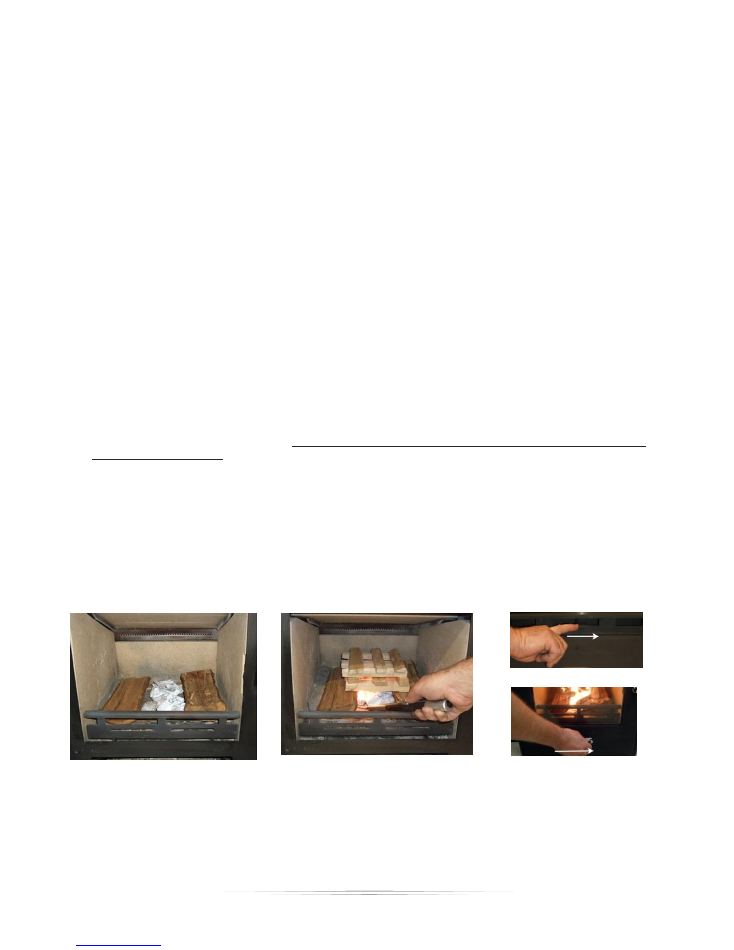
4
Installation and Operating Instructions for Newbourne 35/40/50/60FS Multi Fuel Stoves
Ref: Pevex1022/AH/ver1:May2015
Tested according to the requirements of EN13240 and is fully assessed and considered to meet UK smoke
control requirements (see Appendix A). Note that different fuel consumption results may be achieved due to
other factors which include the fuel, chimney draught and atmospheric conditions etc.
The nominal output is the output to which the stove has been tested. In practice, the stove burns with a heat
output range between its minimum and maximum ratings.
LIGHTING AND COMBUSTION
The primary air is drawn into the stove through the air slider located on the lower part of the door; slide the
knob to the right to allow air to enter and slide it in to the left to shut off the air supply. Allowing 20% of
primary air to enter is a recommended position during normal operation of the stove after the fire has
established in the firebox, allowing a preset bleed of air to enter. In practice however, you may find it
necessary to reduce/increase the air supply depending on the fuel you are burning and the draught of your
chimney.
The secondary air is regulated with the aid of a slider above the door; sliding it to the right increases the air
supply. The heated secondary air flows down the viewing wind
ow creating an “airwash” to keep the glass
clean and feeding the fire; it is this secondary combustion that completes the burning cycle by turning
unburned volatiles into flame. Finally, any remaining unburnt volatiles are burnt when preheated tertiary air
enters the firebox through the tertiary air diffuser at the rear of the firebox.
As much as half of the heat obtainable from wood is achieved from secondary and tertiary combustion. It is
important that the firebox temperature is maintained at a high level as this also aids complete combustion.
For example, when first lighting a stove it is important to get it really hot before closing the burning rate down.
The firebox temperature should reach 400°C which equates to approximately 250 °C at the flue pipe
The Newbourne stoves are designed and fully tested to burn extremely cleanly with very little smoke discharge
and are exempt for use in smoke control areas throughout the UK when burning dry wood logs. To comply,
built-in permanent stops are fitted to the primary air control so that it cannot be closed completely and will
always allow 1cm² of air to enter the firebox whilst the tertiary air allows a permanent 4cm² of air to enter. A
permanent amount of primary air must therefore enter the firebox to feed the fire producing negligible amounts
of smoke and unburnt hydrocarbons.
The appliances will only be considered as exempt appliances if
these stops are in place.
When burning solid fuel it is recommended that the secondary air slider is moved fully to the left and the
primary air slider is opened to allow air to be fed up through the grate and into the fuel. The primary air slider
can be adjusted once the fuel is established to a position that gives the optimum level of comfort and heat.
LIGHTING THE STOVE
1. Put 2 small logs on a bed of ash spaced
about 6-7cm apart. Place some scrunched
up newspaper/paper with 1-2 firelighters in
between .
2. Neatly stack dry kindling on top of the logs
into approx 3 layers and light the bottom fire
lighters.
3a. Fully open top air slider
3b. And lower air slider and leave
the door slightly ajar to allow air
to enter and the fire to establish.
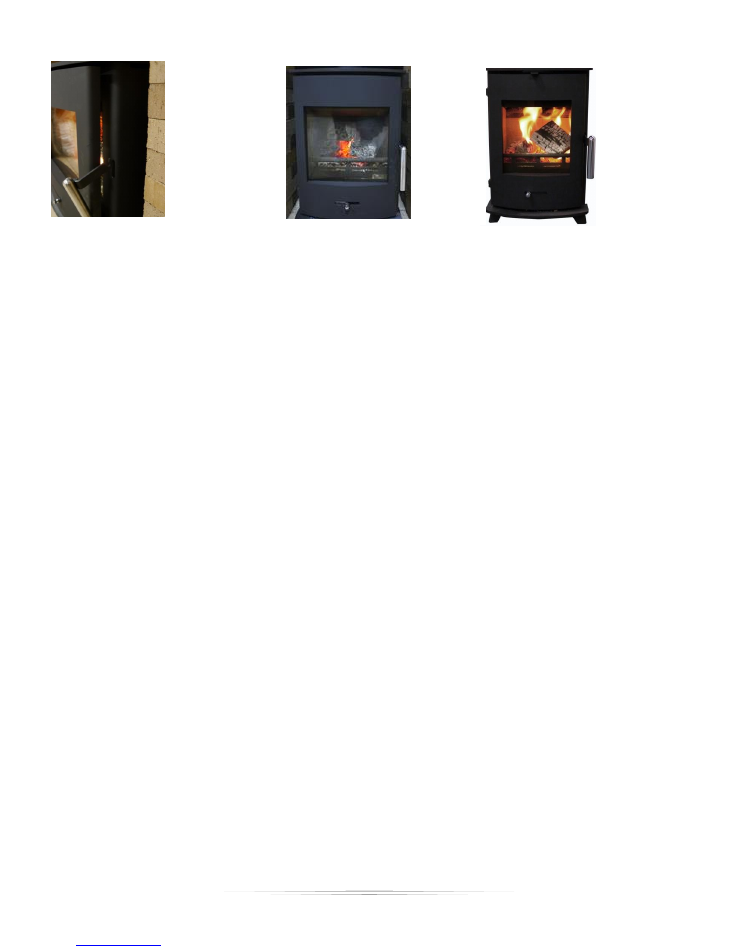
5
Installation and Operating Instructions for Newbourne 35/40/50/60FS Multi Fuel Stoves
Ref: Pevex1022/AH/ver1:May2015
Note
: If the fire dies down completely or embers are smoldering then it will be necessary to place some
screwed up paper or firelighters onto the grate with some kindling or small pieces of wood to reestablish the
fire once again. Leave the air sliders fully open and allow the fire to build before refueling with larger pieces of
wood and then adjust the sliders for optimum combustion.
Do not overload the firebox by loading above the tertiary air diffuser at the back of the firebox and
ensure that the wood is retained by the log guard. Always ensure that the wood is not tightly stacked
so that air can circulate freely.
Do not leave the door open: Operation with the door open can cause excess smoke. The appliance
must not be operated with the appliance door left open except as directed in the instructions.
Do not leave the airsliders completely open: Operation with the airsliders permanently open can cause
excess smoke. The appliance must not be operated with air controls or dampers left open except as
directed in the instructions.
SAFETY PRECAUTIONS
A risk of blowback can arise if too much dry wood is placed in the stove and burnt with insufficient combustion
air. This may result in the production of gaseous compounds which can ignite if the intake of primary and
secondary air is insufficient and the firebox temperature too low.
To achieve optimal firing and the best possible heat output, the primary and secondary air intakes must be
correctly adjusted. As a general rule, the fire should be regulated using the top secondary air supply, with
which smoke and gases are ignited. This produces a high level of efficiency and also keeps the viewing
window clean because the secondary air ‘washes over’ the glass.
For woodburning it is an advantage always to leave some ash lying in the bottom of the combustion chamber.
Take care when emptying the ash pan, as cinders can continue to burn in the ash for long periods of time.
NOTE
: It is always advisable to leave the top air control open to allow the stove to operate to optimum
combustion.
MAINTENANCE OF MATT BLACK PAINT FINISH
The surface of the stove has been treated with heat-resistant paint. The stove can be cleaned with a
soft brush after it has cooled down. Any damage to the surface in the form of chips or scratches can
be repaired using touch-up paint, which is available in spray cans. If the stove has become grey in
colour due to overheating, touch-up paint of this kind can be used to repaint the stove entirely.
Alternatively the stove can be maintained with a traditional type of stove polish of which there are
several proprietary makes available
.
Do not use an aerosol spray anywhere near the stove when it is either
alight or still hot
– allow it to cool down before respraying.
MAINTENANCE OF THE STOVE GLASS
Incorrect firing, for example using wet wood, or slow burning can result in the viewing window becoming
covered in soot. This soot can be easily and effectively removed by using a damp cloth, proprietary stove
glass cleaner or ash on a soft cloth, when the glass is cold. Burning contaminated, incorrect or fuels high in
Sulphur/pet coke may cause permanent damage to the glass (as described on page 3) which is not covered by
any warranty.
6. Place 2/3 logs on
the ash bed ensuring
that the wood is not
stacked too closely
and with the air
sliders fully open.
The wood will ignite
in
2/3
minutes.
Gradually shut the
primary
air
and
adjust the secondary
air
for
optimum
combustion.
5. After about
40/50 minutes
and when the
last flames go
out a red hot
ember
bed
will be left
and
further
wood can be
added.
4. With the door slightly
open
the
fire
will
quickly build warming
the stove and chimney.
After about 5/10 minutes
the door can be shut and
the
stove
can
be
controlled by the air
sliders. Shut the primary
air slider and control the
burning rate with the
secondary air to give
optimal combustion.

6
Installation and Operating Instructions for Newbourne 35/40/50/60FS Multi Fuel Stoves
Ref: Pevex1022/AH/ver1:May2015
OPERATIONAL PROBLEMS
In the event of smoke or malodorous fumes being produced, you must first check to see whether the chimney
is blocked. The chimney must, of course, always provide the minimum draught necessary (12 Pa) to ensure
that it is possible to regulate the fire. However, the chimney draught may also be affected by weather
conditions. Both wind and temperature can affect the performance of a chimney.
In cases where the wood burns too quickly, this may be due to excessive chimney draught. You should also
check to make sure that the door seal is intact. If the stove produces too little heat, this may be due to the fact
that you are firing with wet wood. A large proportion of the heat output will be used to dry the wood, resulting
in both uneconomical heating and an increased risk of soot and tar deposits forming in the chimney.
STANDING DOWN AT THE END OF THE SEASON
At the end of the burning season the stove should be prepared for the stand down period, this is to prevent
corrosion both in the stove and flue system.
The stove should be cleared of all ash, the baffle and flue ways cleared of soot and fly ash and the chimney
swept.
All air vents should be in the open position and it is recommended that the door is left ajar to ventilate the
chimney.
This is the ideal time to check for parts that may need replacing and to lubricate door hinges and catches.
Also it is recommended that all screws holding the glass in place are removed and replaced with a high
temperature lubricant.
PART II INSTALLATION INSTRUCTIONS
(for UK excluding Scotland where local Building
regulations must be conformed to).
It is essential that the installation is carried out by an experienced and competent installer who is HETAS
registered (see www.hetas.co.uk) and with reference to BS 8303, Code of Practice for installation of
domestic heating and cooking appliances burning solid mineral fuel. Under England & Wales Building
Regulations it is a legal requirement that the stove is either installed by a competent person, which is an
installer who is HETAS Registered, or that the installation is carried out under Local authority building control
approval.
CO ALARMS
Building regulations require that whenever a new or replacement fixed solid fuel or wood/biomass appliance is
installed in a dwelling a carbon monoxide alarm must be fitted in the same room as the appliance. Further
guidance on the installation of the carbon monoxide alarm is available in BS EN 50292:2002 and from the
alarm manufacturer’s instructions. Provision of an alarm must not be considered a substitute for either
installing the appliance correctly or ensuring regular servicing and maintenance of the appliance and chimney
system.
See the Building Regulations 2002 Approved document J
http://www.planningportal.gov.uk/uploads/br/BR_PDF_ADJ_2010.pdf
Recommended Reading:
Fireplaces Chimneys and Stoves by Michael Waumsley.
Published by the Crowood Press. ISBN1 86126 746 0
Health and Safety Precautions
Special care must be taken when installing the stove such that the requirements of the Health and Safety at
Work Act are met.
Handling
Adequate facilities must be available for loading, unloading and site handling.
Fire Cement
Some types of fire cement are caustic and should not be allowed to come into contact with the skin. In cases
of contact, wash immediately with plenty of water.
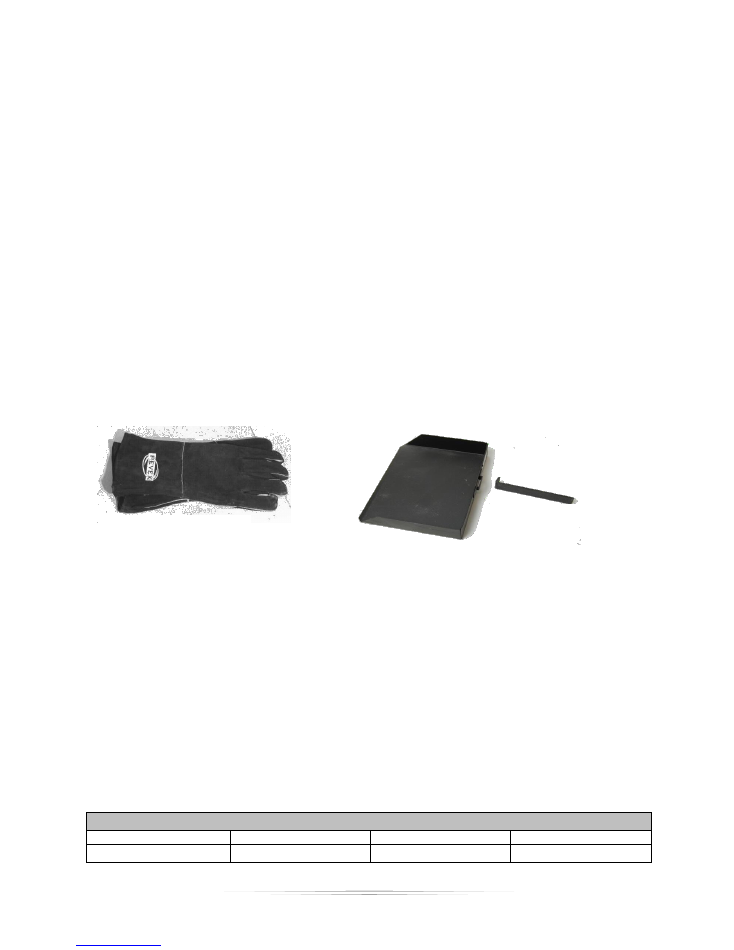
7
Installation and Operating Instructions for Newbourne 35/40/50/60FS Multi Fuel Stoves
Ref: Pevex1022/AH/ver1:May2015
Asbestos
This stove contains no asbestos. If there is a possibility of disturbing any asbestos in the course of the
installation then please seek specialist guidance and use appropriate protective equipment.
Metal Parts
When installing or servicing this stove care should be taken to avoid the possibility of personal injury
ASSESSING THE REQUIREMENTS FOR THE INSTALLATION OF A STOVE
Your supplier or Hetas registered installer will be able to advise you on the individual requirements that are
needed to install a stove safely.
It is most important that the stove is the correct size. This means that the output should match the heat
requirements of the room. Also to be considered is the fuel choice and the provision of suitable and
convenient storage with easy access to the stove.
Having decided on the ideal appliance then the installation should be fully assessed. The chimney
requirements should be carefully assessed. Hearth requirements should be carefully specified, remember the
building regulations lay out the minimum requirements. The chances of damaging a floor or carpet will be
much reduced if the depth of a hearth is extended beyond the minimum. Any combustible materials should be
at least 500mm distance from the sides and back and 800mm clear of the door and should never be allowed to
exceed 80 °C. For further advice on chimney and hearth also see details below.
Assess also the fireplace surround if any is to be used, it is essential that combustible materials are not used
close to the stove and flue pipe. This requirement may vary depending on the construction of a stove but is
advised to keep combustible materials at least 500mm or preferably 1 metre away from the stove or flue pipe.
THE FOLLOWING ITEMS ARE INCLUDED WITH THE STOVE
A pair of leather gloves for operation of door handle and refueling the stove, an ashpan and handle .
HEARTH
The fireplace and hearth should conform to at least the minimum requirements laid out in the Building
Regulations Approved Document J. The hearth should be able to accommodate the weight of the stove and
its chimney if the chimney is not independently supported
Stoves must stand on a non-combustible hearth that must extend at least 300mm in front and 150mm to either
side and rear if the flue outlet is from the top.
DIMENSIONS AND CLEARANCES
No Combustible materials should be used in the construction of a fireplace or within the chimney or used in the
installation of a stove, flue or chimney.
Care should also be taken in the construction of hearths or fireplaces to ensure that suitable provision is taken
to allow for expansion and contraction of the construction materials.
When installing a Newbourne stove in a fireplace recess, sufficient space must be provided on either side,
behind and above to allow for heat convection and for access for maintenance of stove, flue pipe and chimney:
MINIMUM RECOMMENDED CLEARANCES IN A SOLID MASONRY FIREPLACE RECESS
SIDES
REAR
TOP
NEWBOURNE
50mm
50mm
150mm
Leather gloves
Ashpan and handle
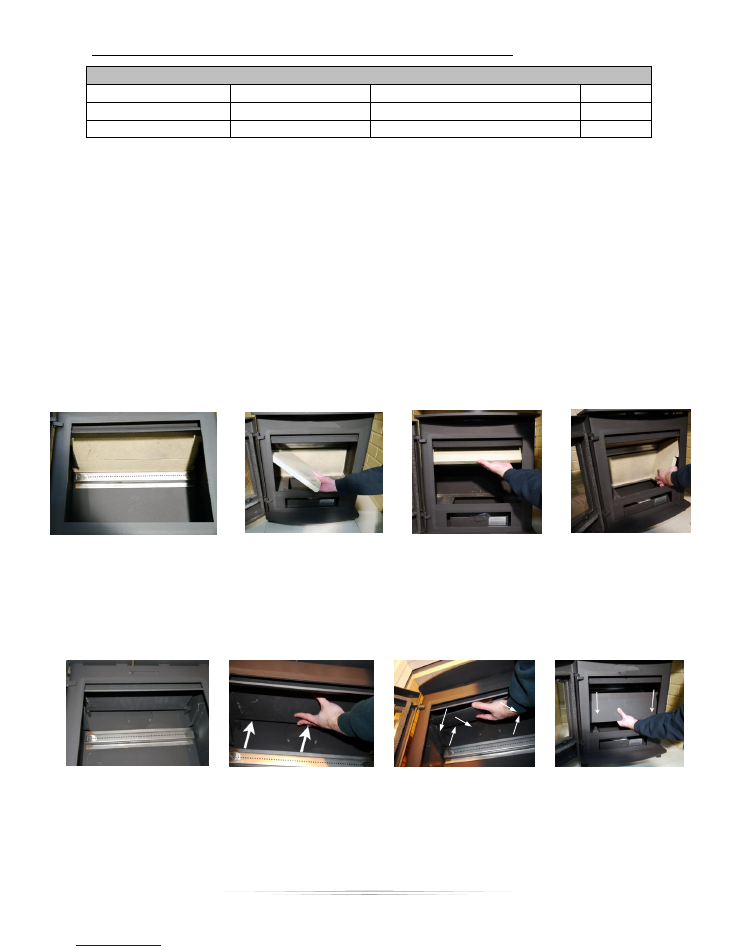
8
Installation and Operating Instructions for Newbourne 35/40/50/60FS Multi Fuel Stoves
Ref: Pevex1022/AH/ver1:May2015
CLEARANCES FROM COMBUSTIBLES
when installing in a freestanding situation:
Recommended minimum clearance from front to combustible materials 800mm
It is deemed safe to install a Newbourne stove on a combustible floor provided it is covered by a non-
combustible hearth plate of at least 12mm thickness and extends at least 300mm in front and 150mm to either
side.
Note:
un-insulated flue pipe must be installed to local building regulations (we recommend that not more than a
1 metre length of plain un-insulated pipe is used before connection to a chimney system and that no
combustible materials are within 500mm of the flue pipe).
Baffle plate removal
The Newbourne stoves are fitted with a twin baffle system to improve efficiency and lower CO with the lower
one made from vermiculite and the upper one made from steel. Removal of the steel baffle allows immediate
access into the flue system for sweeping.
1. Removal of lower vermiculite baffle
2. Removal of upper steel baffle
MINIMUM RECOMMENDED CLEARANCES FROM COMBUSTIBLE MATERIALS:
SIDES
REAR
TOP
NEWBOURNE
400mm
400mm
275mm
185mm (with optional rear heatshield)
1. Newbourne showing the lower
vermiculite baffle in place which is
made in two pieces. Start by
removing the front fence, grate and
two base bricks.
2. Carefully remove the left hand
fire brick. A built-in slot in the
bottom of the brick allows the
ashpan handle tool to be inserted
to aid removal.
3. Followed by the right
hand brick (again use the
ashpan handle to help lever
the brick forward).
4. Gently remove the front
vermiculite baffle by drawing it
forward and over the side brick
supports and tilting it out of the
stove. Repeat for the rear baffle
strip which will expose the
upper steel baffle
1. The upper steel baffle is supported
on rear support pegs whilst the front
edge sits in a support slot.
2. Lift the rear edge of the steel
baffle off the support pegs and
slide backwards……
3. As you move the baffle back (2)
it will disengage from the front
support slot allowing it to be
rotated down (3) on the rear pegs.
4. The baffle can now be drawn
forward over the side supports
and down the front of the stove
and then tilted out of the stove.
Assembly is the reverse.
1
1
3
2
2

9
Installation and Operating Instructions for Newbourne 35/40/50/60FS Multi Fuel Stoves
Ref: Pevex1022/AH/ver1:May2015
CHIMNEY IMPORTANT WARNING
This stove must not be installed into a chimney that serves any other heating appliance. The chimney must
be a minimum height of 4.5 metres overall height and be in accordance with Building Regulations Approved
Document J and reference should be made to British Standard BS EN 15287-1:2007 design, installation and
commissioning of chimneys. Any chimney, either masonry or a prefabricated stainless steel system must be
constructed and installed according to building regulations. It is recommended that the minimum diameter of
the flue liner be 150mm. For new masonry chimneys we recommend pumice cement liners. A chimney
draught of at least .06” (12Pa or 1.5mm) is recommended. If it is found that there is excessive draught in the
chimney then a draught stabiliser should be fitted.
Provision must be made for easy sweeping of the chimney. A soot door can be built into a masonry chimney
and flue pipe is available with cleaning doors.
Any bend in the chimney or connecting fluepipe should not exceed 45º and 90º bends should not be
used.
THE CHIMNEY CONNECTION.
The flue pipe for connecting the appliance to the chimney must be installed according to Building Regulations
Approved Document J and its diameter must be not less than the diameter of the outlet of the appliance. The
fluepipe must be adequately sealed to both the stove and the chimney to avoid any leakage.
We recommend also that no more than 1metre of plain un-insulated flue pipe be used to connect to the
chimney.
ALL CHIMNEYS SHOULD BE SWEPT AND INSPECTED BEFORE INSTALLATION OF ANY APPLIANCE
For relining existing chimneys 316 or 904 grade stainless steel liners or pumice cement liners in accordance
with Building Regulations Approved Document J should be used. Liners should be suitably insulated. We
recommended that any chimney relining is carried out by an experienced and competent installer who is
HETAS registered (see www.hetas.co.uk). The HETAS Guide to Approved Products and Services lists
Chimneys and lining systems suitable for use with solid fuel.
SWEEPING THROUGH NEWBOURNE.
When installed with a top flue outlet it is possible to sweep through the Newbourne Stoves. Remove the
baffles as described above, and access can be gained to the flue pipe.
VENTILATION
Purpose made ventilation is not required on the Newbourne 35 and 40FS for houses built before 2008.
Houses built after 2008 where the air leakage rate is less than than 5m3/hour/m
2
then a ventilator equivalent to
550mm
2
per kW output will be required
eg 4kW x 550mm = 2200mm
2
.
COMMISSIONING
The installer should carry out the following checks and ensure that the stove is fully functional. We strongly
recommend that a first firing is included in the commissioning process
1. Check all flue pipe connections
2. Check door latch mechanism
3. Check door and glass seals are all intact and secure
4. Warm chimney and check draught.
5. Instruct customer in use of stove.
6. Leave instructions for customer
7. Check that after initial firing the door seals are not stuck to the body of the stove
Appendix A
The Clean Air Act 1993 and Smoke Control Areas
Under the Clean Air Act local authorities may declare the whole or part of the district of the authority to be a
smoke control area. It is an offence to emit smoke from a chimney of a building, from a furnace or from any
fixed boiler if located in a designated smoke control area. It is also an offence to acquire an "unauthorised
fuel" for use within a smoke control area unless it is used in an "exempt" appliance ("exempted" from the
controls which generally apply in the smoke control area).
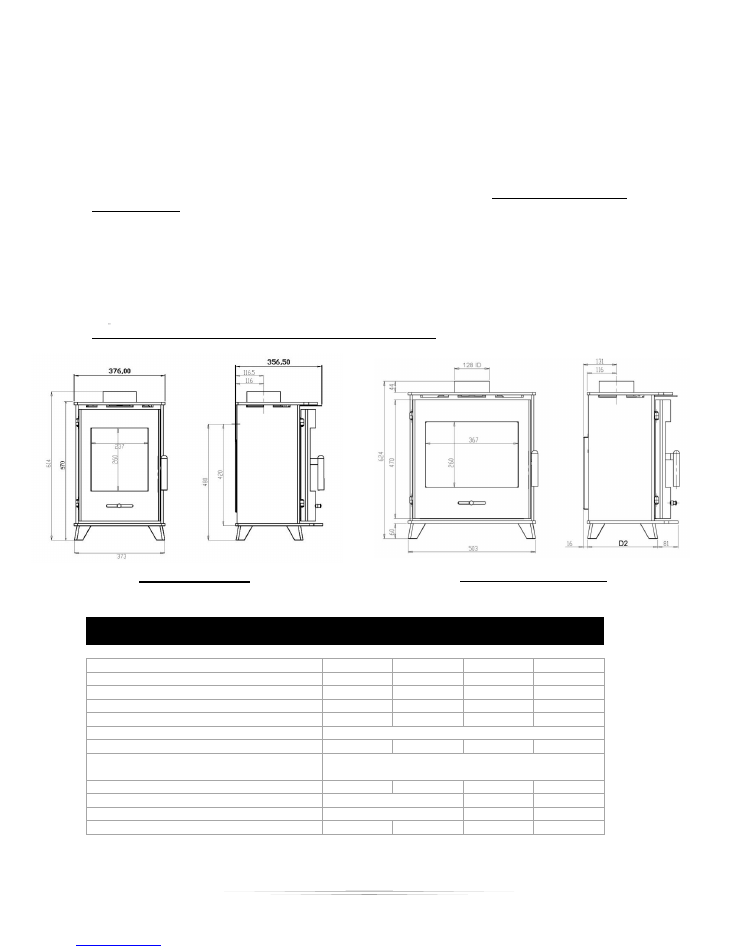
10
Installation and Operating Instructions for Newbourne 35/40/50/60FS Multi Fuel Stoves
Ref: Pevex1022/AH/ver1:May2015
The Secretary of State for Environment, Food and Rural Affairs has powers under the Act to authorise
smokeless fuels or exempt appliances for use in smoke control areas in England. In Scotland and Wales this
power rests with Ministers in the devolved administrations for those countries. Separate legislation, the Clean
Air (Northern Ireland) Order 1981, applies in Northern Ireland. Therefore it is a requirement that fuels burnt or
obtained for use in smoke control areas have been "authorised" in Regulations and that appliances used to
burn solid fuel in those areas (other than "authorised" fuels) have been exempted by an Order made and
signed by the Secretary of State or Minister in the devolved administrations.
The
Newbourne Range
have been recommended as suitable for use in smoke control areas when burning
wood logs.
Further information on the requirements of the Clean Air Act can be found here: https://www.gov.uk/smoke-
control-area-rules
Your local authority is responsible for implementing the Clean Air Act 1993 including designation and
supervision of smoke control areas and you can contact them for details of Clean Air Act requirements.
APPENDIX B
TECHNICAL SPECIFICATIONS NEWBOURNE SERIES
NEWBOURNE & NEWBOURNE PANORAMA
35FS
40FS
50FS
60FS
Width x max depth
376 x 356
503 x 374
503 x 414
503 x 451
Height
570
580
580
580
Distance over legs D2
278
277
317
355
Weight kg
65
82
92
102
Log length
260
360
360
360
Flue dia (top or rear)
128
Nominal Output kW
3.8
4.5
5.5
6.5
Distance from rear of stove to centre of top
flue outlet
131
Efficiency (Net): Wood %
80
79.5
75.5
80.4
Efficiency (Net): Smokeless fuel %
80
72.4
70.2
71
CO% @ 13% O2: Wood
0.49
0.14
0.15
0.17
CO% @ 13% O2: Smokeless fuel
0.27
0.33
0.33
0.19
All dims in mm
Newbourne 35FS
Newbourne 40/50/60FS